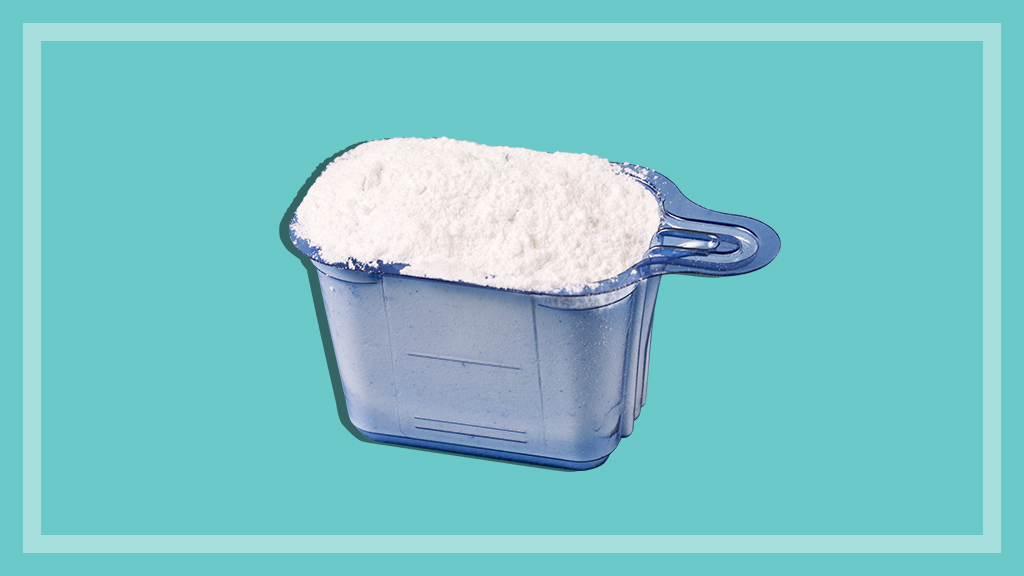Get our independent lab tests, expert reviews and honest advice.
How to cut your laundry costs by more than $1100 a year

Let’s face it: no-one likes doing laundry. (And if you do, can you please teach us your ways?)
Not only is it a boring, thankless task, but depending on how you wash your clothes and use your washing machine, it can get expensive, too.
If you’re like most of us, you’ve probably noticed the price of household items, water and electricity biting into your budget. In fact, in our September 2024 Consumer Pulse survey, more than 9 out of 10 people (93%) told us that their household expenses had increased in the previous 12 months.
And the way you do your laundry is responsible for a chunk of that cost, whether it’s the detergent you use or how you operate your washing machine.
More than 9 out of 10 people told us that their household expenses had increased in the previous 12 months
We’ve written before about how making a few simple changes to your laundry habits can mean big savings. We’ve recently recalculated the costs and it’s still true.
In fact, you could save a huge chunk of money – more than $1100 – just by tweaking a few of your laundry habits.
Here are some simple tips from our laundry experts to save you time and money.
Let’s start with an imaginary scenario:
- You have a front-loading washing machine.
- You run a half-full load every day on a warm wash.
- You use Omo Ultimate 3 in 1 Capsule Front Loader ($1.35 a wash).
- You use Purity Sensitive fabric softener (21c a wash).
- You use a vented dryer to dry your laundry.
We’ll show you how much you can save by making small changes to the way you do your laundry. Trust us, it’s worth it!
1. Run full loads of washing – and we mean full
It’s pretty simple, really – you’re going to use more water, detergent and electricity washing two smaller loads than one big one. So instead of doing smaller washes every day, do a full load every two days instead.
So how much is a full load? It’s a full laundry basket, right? Wrong.
“A full laundry basket generally only holds about 3.5kg, but most washing machines can take much more. In fact, if you fill it to capacity by weight you may even have trouble getting the door shut,” says Matthew Steen, CHOICE head of reviews and testing.
“Even packed that tightly your machine can still get clothes clean, but be mindful that not all programs are suitable for a full capacity wash, so check your manual.”
2. Wash on cold
You’ll get pretty much the same cleaning power from a cold wash as from a warm wash – but you’ll use far less electricity. (Warm water is slightly better than cold water, but there’s very little between the two – and certainly not enough to justify the extra cost.)
And washing in hot water can make things worse by setting stains in, so a cold wash is often the smarter choice anyway.
Washing in hot water can make things worse by setting stains in
“While washing in warm water is slightly better than cold, it’s so close these days that it’s not worth the extra energy and cost of a warm cycle. That’s particularly true when you’re using a modern enzyme-based detergent that are designed for cold-water washing,” says Matthew.
According to our calculations, if you were to switch from washing a half load every day on a warm wash, to washing a full load every day on a cold wash, you could save yourself $181.14 a year. That’s not to be sniffed at!
Run full loads: save up your laundry to run a full load every two days, rather than a half load every day.
Wash on cold: you’ll get pretty much the same cleaning power from a cold wash as a warm wash, but it’ll use less electricity.
Switch detergents: consider switching to a cheaper laundry detergent. Some cost as little as 11 cents per wash.
Use less detergent: using a third of the recommended amount of detergent will still give you excellent results.
Skip the softener: fabric softener is expensive and unnecessary. Our experts say you don’t need to use it.
Reduce dryer use: If you can line dry your laundry, then do it. If you need to use your dryer, buy an energy-efficient heat pump dryer to save electricity.
Shop smart: By checking CHOICE before buying, you could save yourself hundreds of dollars on a new washing machine or dryer.
3. Switch to a cheaper (but high performing) laundry detergent
In our expert laundry detergent testing, the top performers range in price from as little as 11 cents a wash, all the way up to $1.35 a wash.
For example, let’s compare two front-loader laundry detergents that scored 82% and 79% respectively in our tests:
Omo Ultimate 3 in 1 Capsule Front Loader ($1.35c a wash, $492.75per year)
- Aldi Laundrite Laundry Powder Front Loader (11c a wash, $40.15 a year)
While the Omo detergent did perform better in our tests, the Aldi product does a good job, barely missing out on being recommended. Let’s assume that you run a wash every day. You’d spend $492.75 on the Omo capsules and just $40.15 on the Aldi. So switching from the Omo to the Aldi would save you $452.60 a year, just in detergent costs alone.
And you could save even more if you also follow our next two steps!
4. Use less detergent
It may seem counterintuitive, but adding more detergent to your washing machine won’t actually make your clothes cleaner – in fact, overdoing it can have the opposite effect.
We’re not suggesting you need to walk around in semi-dirty clothes to save money. But you’ll find that using just a third of the recommended amount of laundry detergent will still give you excellent results – and your detergent will last three times longer.
“Even using a fraction of the recommended dose still gives you a great wash,” says Matthew.
Using less detergent is also better for the environment and for your skin
Not only that, but putting too much detergent into your machine can lead to a build-up of ‘scrud’ in your washing machine, which could drag down its washing performance. Using less detergent is also better for the environment and for your skin.
So instead of using one Omo capsule every time you wash, you could use a third of a scoop of the Aldi detergent. And if you’re only washing every second day, you’ll spend just $6.62 on laundry detergent for the year – a saving of $486.13 in one year, on detergent costs alone.
5. Skip the softener
Our laundry experts aren’t big fans of fabric softener.
“There are lots of reasons why fabric softeners are a bad idea. They reduce the moisture absorbency of your laundry, which is bad news for your towels, and they reduce the fire retardancy of clothing, which means you definitely shouldn’t use them on children’s sleepwear,” says Matthew.
“You’ll also be adding chemicals to your clothes that won’t be washed away because they’re left behind when the wash cycle is complete, so you’re effectively re-soiling your clothes with chemicals, which you then wear against your skin.
“Used repeatedly, fabric softeners will build up in your washing machine, which will make it run less efficiently and can potentially damage it, too.”
You’ll also be adding chemicals to your clothes that won’t be washed away because they’re left behind when the wash cycle is complete
Laundry expert Matthew Steen
Our advice? Give them the flick. You can use white vinegar, or a DIY fabric softener mix, instead.
So how much could you save by doing away with fabric softener? If you use an average-priced fabric softener, such as Purity Sensitive (21 cents a wash), then by ditching it you could save a further $76.65 a year, if you do one wash every day.
Laundry cost comparison
How much you can save by changing the way you wash
Scenario 1:
Half load of washing; every day; warm wash: $192.72
Omo 3 in 1 capsule: $492.75
Fabric softener: $76.65
Vented clothes dryer: $448.95
Total: $1211.07
Scenario 2;
Full load of washing; every two days; cold wash: $11.58
Third of a scoop of Aldi: $6.62
No fabric softener: $0
Line drying: $0
Total: $18.20
Save: $1192.87
Prices are calculated per year
6. Use your dryer sparingly
Most places in Australia are warm and dry enough to make line-drying a viable option, so if you can line-dry your laundry, then make that a habit.
If you do need to use the dryer, make sure you’ve used the highest spin speed available on your washing machine to get as much water out of your laundry as possible – that way you won’t need to run the dryer as long.
Most places in Australia are warm and dry enough to make line drying a viable option, so if you can line dry your laundry, then make that a habit
If you need to use your dryer frequently, spend a little more money upfront to buy an energy-efficient heat pump dryer – it will save you on electricity. But if you only use your dryer for laundry emergencies, a cheap vented dryer will work out cheaper overall.
The cheapest-to-run vented clothes dryer we recommend in our testing is the Electrolux EDV705H3WB, which will cost you $1.23 per load to run. If you’re drying a load of washing in the dryer every day that will add up to $448.95 in a year.
“Taking advantage of the sunshine by switching from clothes dryer to clothesline means that money goes back in your pocket,” says Matthew.
7. Shop wisely when buying a washing machine and dryer
In our expert lab tests, we frequently find cheaper washing machines and dryers that outperform more expensive, big-name brands.
We’ve been testing washing machines for about 60 years in our state-of-the-art labs, so we know a thing or two about what makes the best washing machine.
We frequently find cheaper washing machines and dryers that outperform more expensive, big-name brands
By shopping smarter, you could save yourself hundreds of dollars on a new appliance. Check our washing machine reviews and dryer reviews to find the best appliances for your money.
Knowing what not to buy can be just as important as knowing what to buy. Here are the washing machines to avoid buying.






